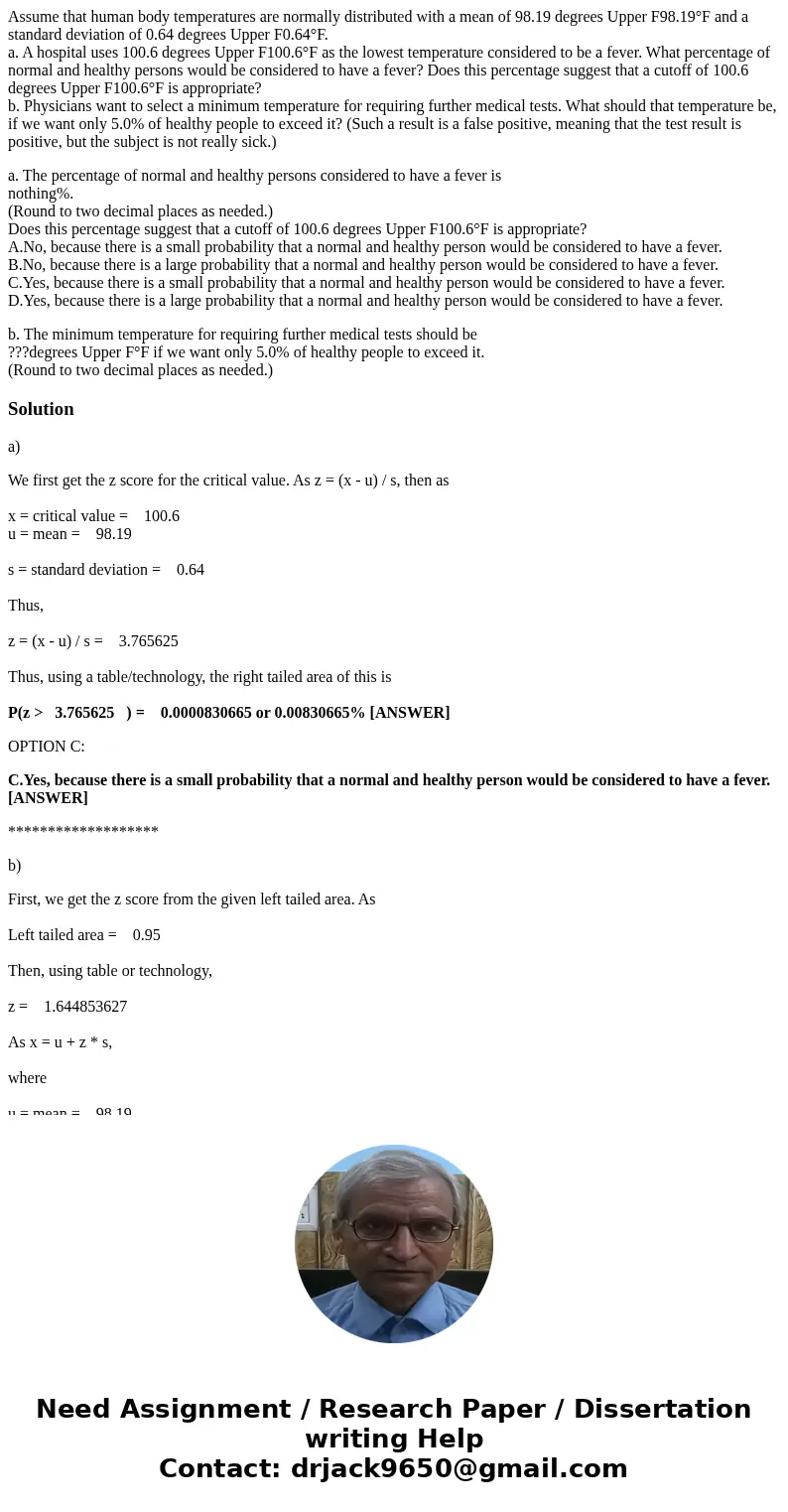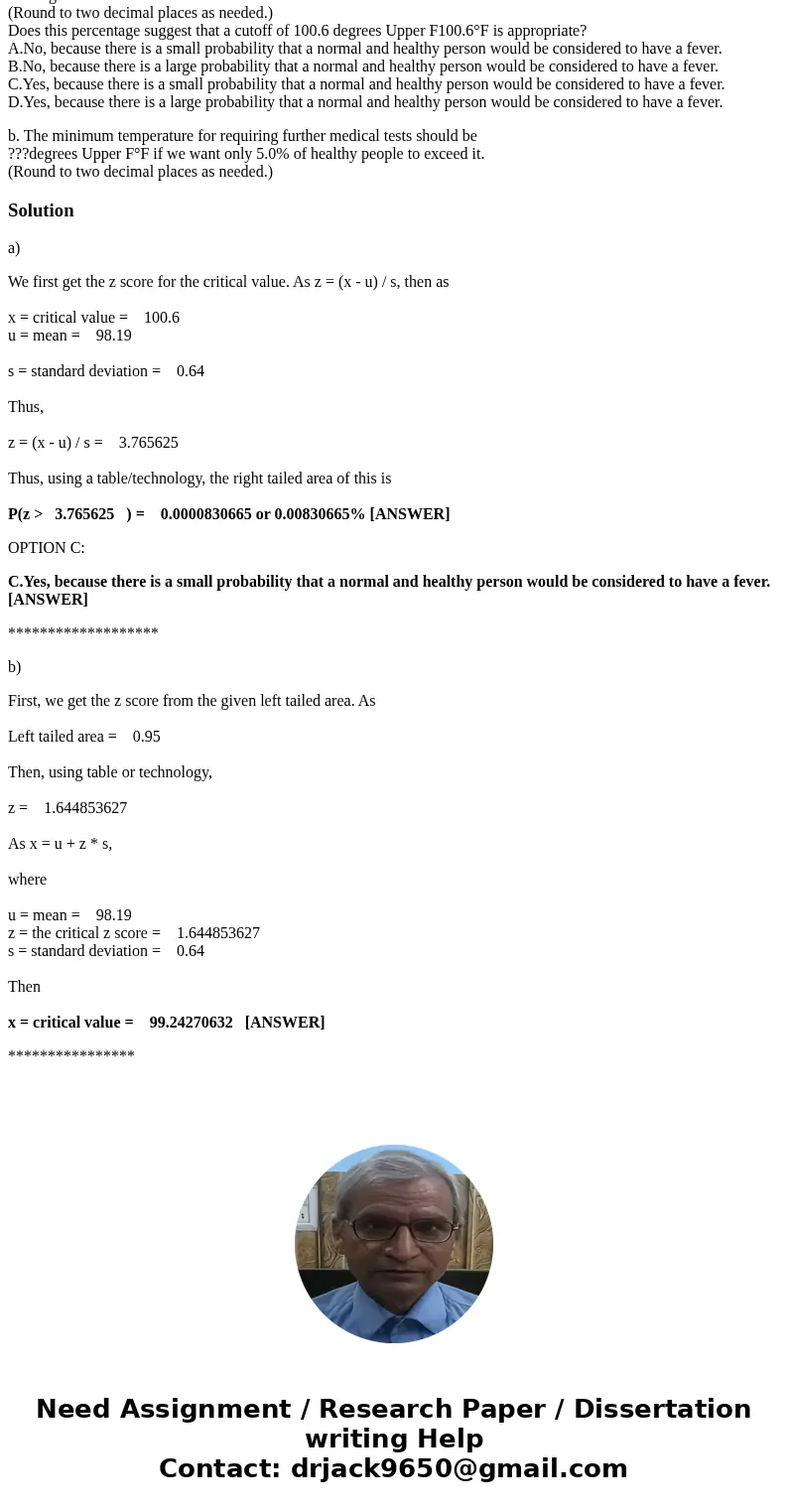Assume that human body temperatures are normally distributed
Assume that human body temperatures are normally distributed with a mean of 98.19 degrees Upper F98.19°F and a standard deviation of 0.64 degrees Upper F0.64°F.
a. A hospital uses 100.6 degrees Upper F100.6°F as the lowest temperature considered to be a fever. What percentage of normal and healthy persons would be considered to have a fever? Does this percentage suggest that a cutoff of 100.6 degrees Upper F100.6°F is appropriate?
b. Physicians want to select a minimum temperature for requiring further medical tests. What should that temperature be, if we want only 5.0% of healthy people to exceed it? (Such a result is a false positive, meaning that the test result is positive, but the subject is not really sick.)
a. The percentage of normal and healthy persons considered to have a fever is
nothing%.
(Round to two decimal places as needed.)
Does this percentage suggest that a cutoff of 100.6 degrees Upper F100.6°F is appropriate?
A.No, because there is a small probability that a normal and healthy person would be considered to have a fever.
B.No, because there is a large probability that a normal and healthy person would be considered to have a fever.
C.Yes, because there is a small probability that a normal and healthy person would be considered to have a fever.
D.Yes, because there is a large probability that a normal and healthy person would be considered to have a fever.
b. The minimum temperature for requiring further medical tests should be
???degrees Upper F°F if we want only 5.0% of healthy people to exceed it.
(Round to two decimal places as needed.)
Solution
a)
We first get the z score for the critical value. As z = (x - u) / s, then as
x = critical value = 100.6
u = mean = 98.19
s = standard deviation = 0.64
Thus,
z = (x - u) / s = 3.765625
Thus, using a table/technology, the right tailed area of this is
P(z > 3.765625 ) = 0.0000830665 or 0.00830665% [ANSWER]
OPTION C:
C.Yes, because there is a small probability that a normal and healthy person would be considered to have a fever. [ANSWER]
*******************
b)
First, we get the z score from the given left tailed area. As
Left tailed area = 0.95
Then, using table or technology,
z = 1.644853627
As x = u + z * s,
where
u = mean = 98.19
z = the critical z score = 1.644853627
s = standard deviation = 0.64
Then
x = critical value = 99.24270632 [ANSWER]
****************


 Homework Sourse
Homework Sourse